We Don’t Need These Killers in Australia!
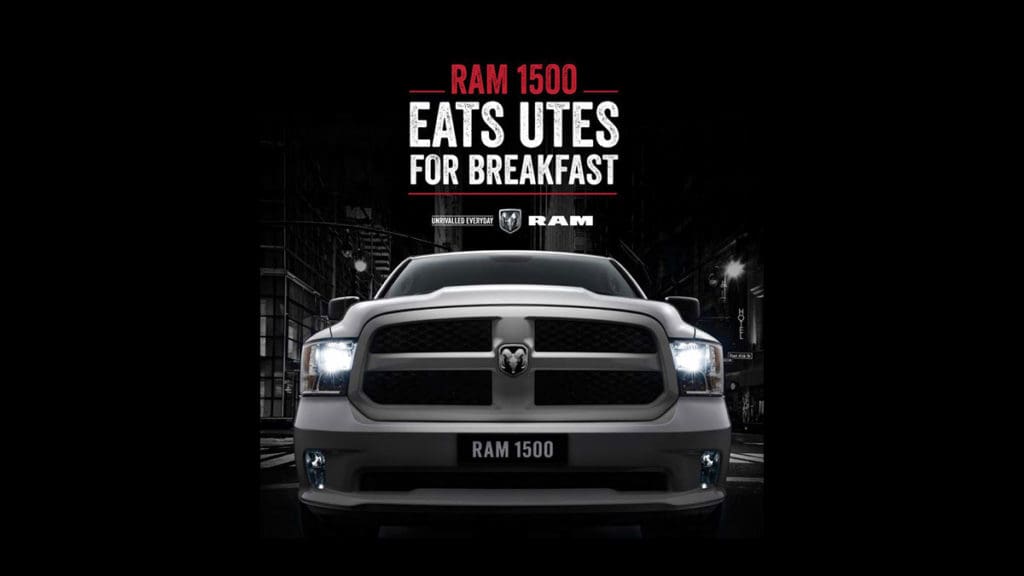
Wollongong / NSW
For micromobility to flourish, people need to feel safe on our roads. Over the past couple of years, I have been alarmed and dismayed to see a rapid acceleration in the number of ‘hyper macho pickup trucks’ being imported from the USA and appearing on our streets.
In the USA thousands more cyclists and pedestrians are being killed and seriously injured every year than was the case a decade ago.
In 2018 alone, over 6,283 pedestrians and 850 cyclists were killed.
Why is this happening?
During this period there has been a dramatic rise in the sale of pickup trucks. They now account for a staggering 70% of private vehicle sales in America. Some major American vehicle brands no longer include a single conventional car in their model range.
Of course, this could just be a coincidence and there might not be a direct causal link between the rise of pickup truck sales and the increasing deaths of ‘vulnerable road users’. I acknowledge that this is a controversial expression in mobility circles.
But if you have bearing down upon you a 1.6 metre high vertical grille, backed by 3,000 kg of truck, in which the driver has poor close range forward visibility, then you’re vulnerable! Academic studies like this one suggest that it’s not just coincidence and conclude that, ‘Vehicle type strongly influences risk of severe injury and death to pedestrian. This may be due in part to the front end design of the vehicle. Hence vehicle front end design, especially for light truck vehicles, should be considered in future motor vehicle safety standards.’
It’s a problem when vehicles of any category, become weaponised.
And the ultimate example of this is the ever bigger, meaner, more macho American pickup trucks.
Phil Latz
At this point I’d like to emphasise, that I’m not against commercial vehicles. All sorts of tradies, farmers and other groups use utes or pickup trucks to carry large and heavy loads. In this setting they’re a great productivity tool.
In fact, I even own a commercial vehicle myself, which I’ve used for years to carry building materials, kitchens, doors, furniture and a host of other large items needed to renovate properties. Many times I’ve loaded this vehicle to its maximum capacity and then towed a trailer load behind it.
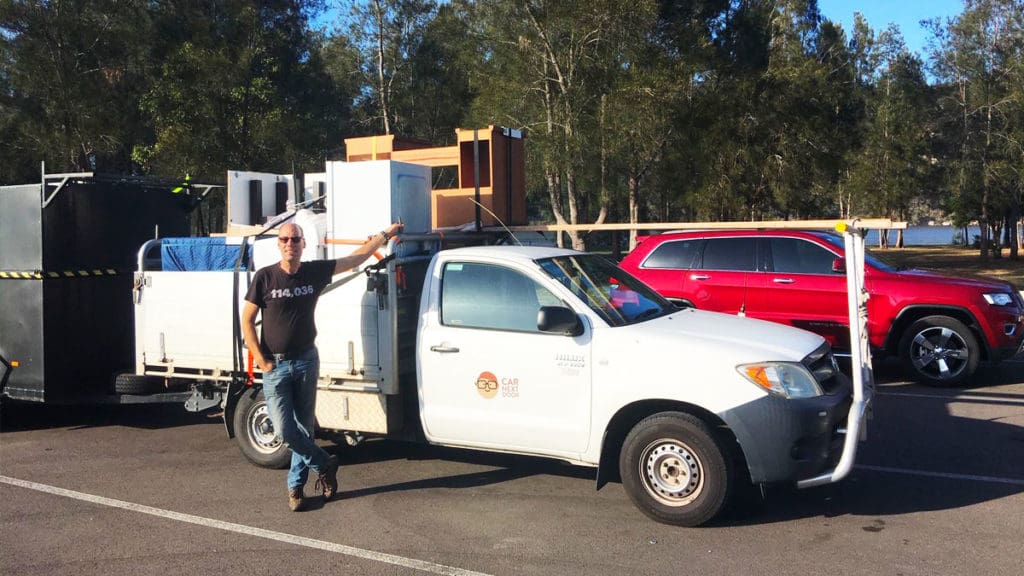
Clearly, my ute would be kinder to the environment if it were electric and not petrol. Right now there’s no electric ute option available on the market. But that change is coming soon enough, despite the best delaying efforts of Australian politicians evidenced by breathtakingly short sighted electioneering comments such as, “We are going to stand by our tradies! And we are going to save their utes!”
Yes, these words were really spoken by an Australian Federal Government Minister during the 2019 federal election campaign, with the Prime Minister smiling approvingly in the background.
And for tradies who genuinely need larger capacity, a vehicle such as the Volkswagen Crafter pictured below offers all of the passenger, cargo and working capacity of the large USA pickup trucks, but with a motor that’s half the size, vastly better forward visibility and a much lower more rounded, pedestrian friendly front impact area. Oh, and it’s about $50,000 cheaper.
But of course, it’s slower, quieter, plainer looking, more utilitarian and nowhere near as macho. Clearly, these are major drawbacks in the eyes of current pickup truck buyers.
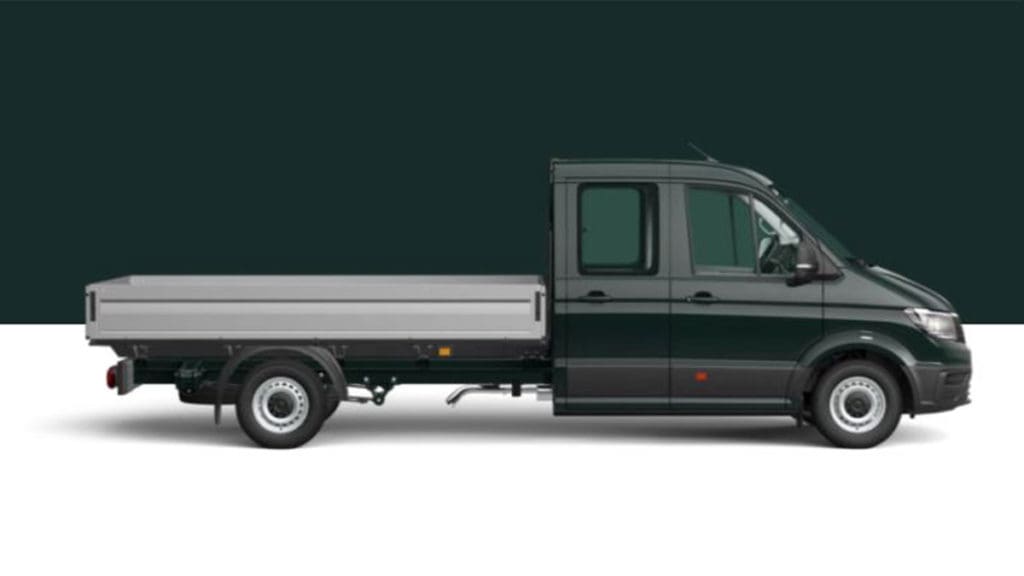
Petro Masculinity
It’s a problem when vehicles of any category, become weaponised.
And the ultimate example of this is the ever bigger, meaner, more macho American pickup trucks.
Not only cyclists but even other motorists feel vulnerable when they can barely see up to the pickup truck’s door handles from their Toyota Corolla or Honda Civic, which weighs less than half as much. They feel compelled to buy a larger, higher, heavier vehicle to protect themselves and their family in this motor vehicle arms race. The irony is that for the vast majority of their existence, most of these pickup trucks are never used to carry anything heavier than the weekly grocery shopping, or taking the kids to school.
Pickup truck designers admit that it’s all about creating a macho image, often with military overtones, with ever higher, meaner looking grilles. You can even buy after market accessories to give your vehicle a mean frown.
In fact, a quick Google search will uncover a huge industry in selling accessories and advice such as this example of ‘How to Make Your Truck Look Aggressive and Badass in 15 Steps.’
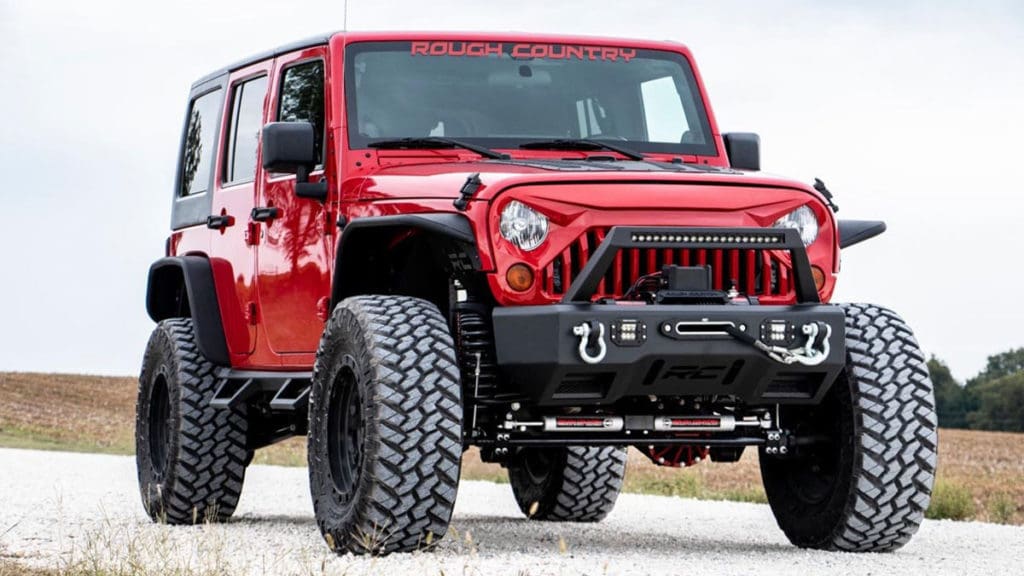
Then there’s the whole ‘get out of my way’, ‘I own the road’, ‘sense of entitlement’ that goes with these vehicles. You can see this in the advertising and other adornment of these vehicles.
As this article details.
Once you’ve got your pickup truck looking as mean as possible, then you can modify the exhaust so that you can play the fun game of ‘Rollin’ Coal’. Drive up alongside any pedestrian or cyclist that you don’t like the look of, slow right down then plant your foot on the accelerator and bury them in a dark cloud of thick exhaust fumes. You won’t have any pesky legal hassles compared to if you actually run them over, but hey – you can sure put them back in their place!
This is another growing industry, complete with a wide range of offensive bumper stickers for sale via Amazon, Etsy and most other online marketplaces of your choice.
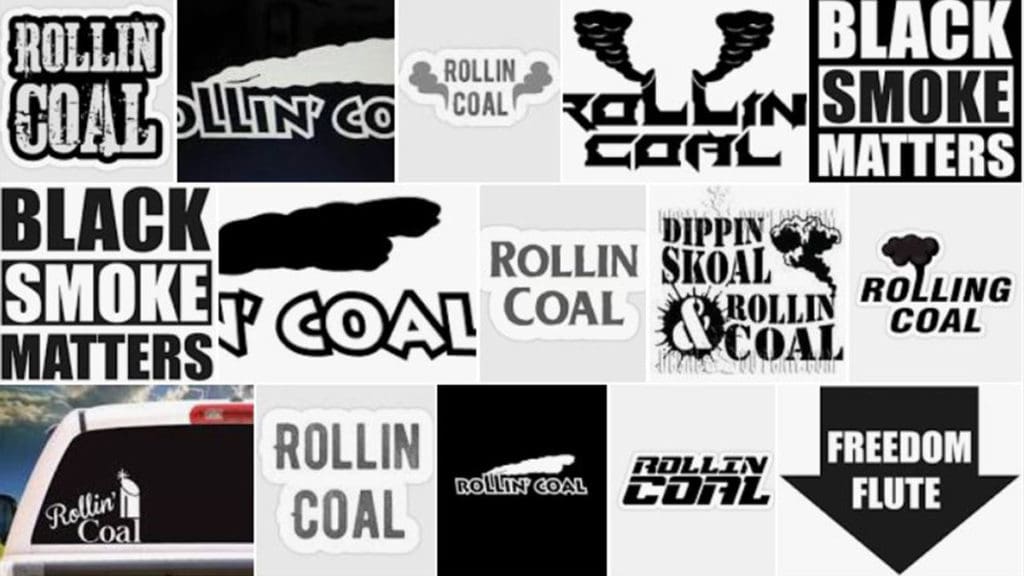
There are multiple negative consequences of so many of these of massive vehicles being used for solely or mainly for regular household activities. There’s pressure to make shopping centre carparks larger to fit them. They stick out more from kerbside parking spaces and have larger doors, making it even more dangerous for cyclists to pass them and not get ‘doored’.
We don’t have to blindly accept that bigger is better and that whatever the USA does is right. Instead of following the deadly, divisive American road, why don’t we become smarter like the Europeans?
Phil Latz
And of course they take more resources to manufacture, fuel, repair and ultimately, recycle.
So what should we do about all of this?
Australia doesn’t have to blindly follow every policy decision of the USA.
We’ve proved this before. For example, as a nation, America finds it acceptable for almost 40,000 people to be killed each year through gun violence, whereas Australia chose to enact tougher gun laws. As a result ‘only’ about 200 people are killed each year. That’s 200 times lower than the USA and still over 13 times lower per capita, after adjusting for population.
It should be the same with pickup trucks. America’s road toll had dropped to the low 30,000’s a decade ago but has trended back up to over 40,000 deaths per year today.
If America wants to kill over 40,000 people per year, injure multitudes more, turn their roads into a war zone and their car parks into massive asphalt deserts, then that’s their choice as a society and sovereign nation. But we can go down a different road.
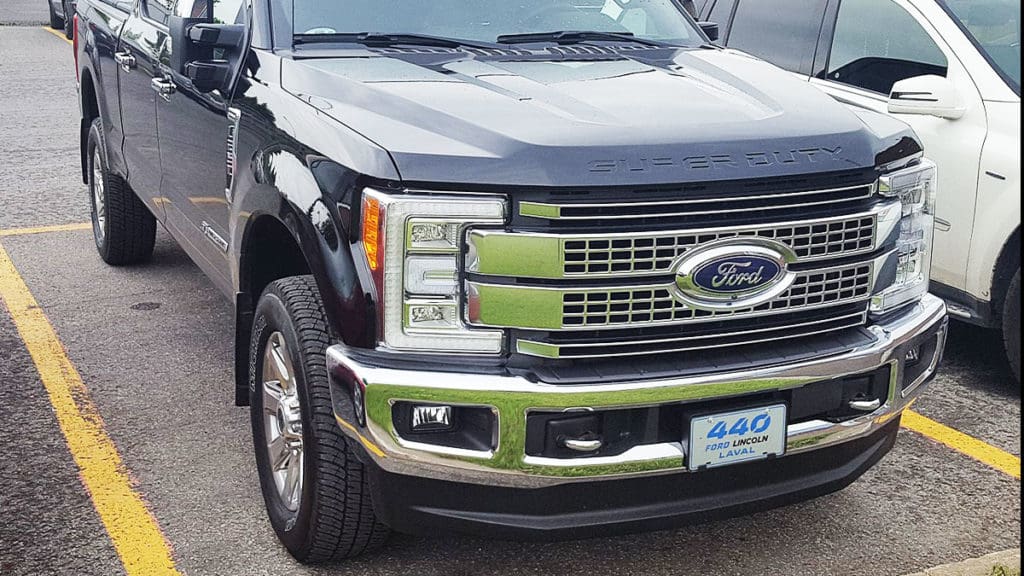
I haven’t visited Europe or the UK recently, nor has virtually anyone else in our Covid-19 world, but in previous trips I don’t think I saw a single USA make pickup truck.
Through a combination of narrower lanes, smaller parking spaces, much more highly taxed petrol, vehicle taxes based on engine capacity, tougher pollution and safety laws, the Europeans have effectively banned giant American pickup trucks.
Is it by coincidence that per capita, European nations also have both much lower road tolls than Australia and much higher rates of micromobility use?
We do have a choice here as a society. We don’t have to blindly accept that bigger is better and that whatever the USA does is right. Instead of following the deadly, divisive American road, why don’t we become smarter like the Europeans?
If micromobility is going to flourish, we need to create a nurturing environment, and reducing risk from large vehicles is a key part of this process.

For me it is interesting to observe that Australians feel guilty to produce plastic waste but the guilt does not seem to apply when driving. Being raised in Germany, while many people enjoy driving, it is known to be a “guilty pleasure” – especially for shorter distances people would question why you needed to drive your car. Big SUVs have become more popular too but a lot of negative press is framing them as bad for kids and environment and lack of parking, small parking spaces automatically make them a less attractive choice. I wonder why driving does not have the negative stigma attached here. That would be an important first step for people to choose smaller cars, electric cars and try to walk and cycle more. The only hope I have is for electric cars, kids in Oz get extremely excited when they spot a Tesla. And while some Tesla are still very big at least they have very good technology to spot and protect pedestrians and remind drivers of the speed limits etc..
My answer to your wondering about why driving (especially shorter trips) does not have a negative stigma here compared to your home country of Germany would be because of our history and geography. We’re a younger country (in European settlement terms) with fewer ‘pre car’ cities and towns.
We’ve started with more space, fewer people and wider streets. Then add a century of wall to wall car advertising which has solidified into a deep car culture, add a large scoop of government support and voila! – you have the perfect recipe for the car culture cake that we’re now eating across Australia.
And the macho mind set can start early, with “Transformer” craze for the 3 year olds, able to turn a monster vehicle into a monster and vice versa. But the ‘brawn is best’ USA vehicle designers and makers are really outdoing the kiddies efforts! And these things have no place in our inner city zones, where typically are the highest densities of bicycle traffic and peds. And an especially terrifying sight for a young mother on a cargo bike with two youngsters on board. Maybe Stephen Hodge can take an interest? What hope We Ride Australia if these monsters become common?
And Phil, hearty congratulations on your latest effort. Such a wealth of information; it will become a reference source especially about the growing rush of developments of electric powered 2 and 3 wheeled people movers, scooters etc. Advances in electric powered bicycle technology in Europe, as revealed in recent weeks by LEVA-EU, is the flip side of the USA-driven (sic) road behemoths.
Thanks for your comments Michael.
For anyone wondering LEVA-EU is the Light Electric Vehicle trade association in Europe with about 50 business members across a range of specialities. http://www.leva-eu.com
I’m so glad to see you are onto this Phil. I just spent a week riding in Sydney and was shocked by the prevelence of these things. There has been a recent increase. They are so big, so high and wide. They are quite intimidating.
Only today while riding my bike I had a Dodge Ram start to pull out in front of me from a driveway. Yesterday I had to squeeze past a parked one while riding down a busy four lane road where the two curb side lanes allow parking but it’s 60 kph solid traffic in the travel lanes.
There was definitely no ‘door zone margin’ unless I was to ride wider into the traffic lane or stop and wait for a break in the traffic.
Another factor is the favourable tax treatment of larger vehicles which acts as an incentive for corporations to purchase these for fleet vehicles (later to be passed on to the broader community as ex-fleet). It’s obscene that our government who is struggling and failing with its road safety strategy targets is incentivising more dangerous vehicles. Reform needed.
You raise a valid point. In fact the Covid-19 recovery package has included raising the instant asset write-off threshold from $30,000 to $150,000. Even more incentivising for big US pick up truck purchases is that there is a threshold of ‘only’ $57,581 for utes that can carry less than one tonne, but anything up to the full $150,000 for utes that can carry more than one tonne.
As these USA pickups typically cost between $100,000 and $150,000 in Australia, depending upon model and accessories, that means that many of them would be qualify for an full tax write off.
Thanks for your comment Ben. And by the way congratulations for being the first to make a comment upon any article after our first ever newsletter. Hopefully you’ll become the first of a very long line over the months and years to come…
Couldn’t agree more Phil!